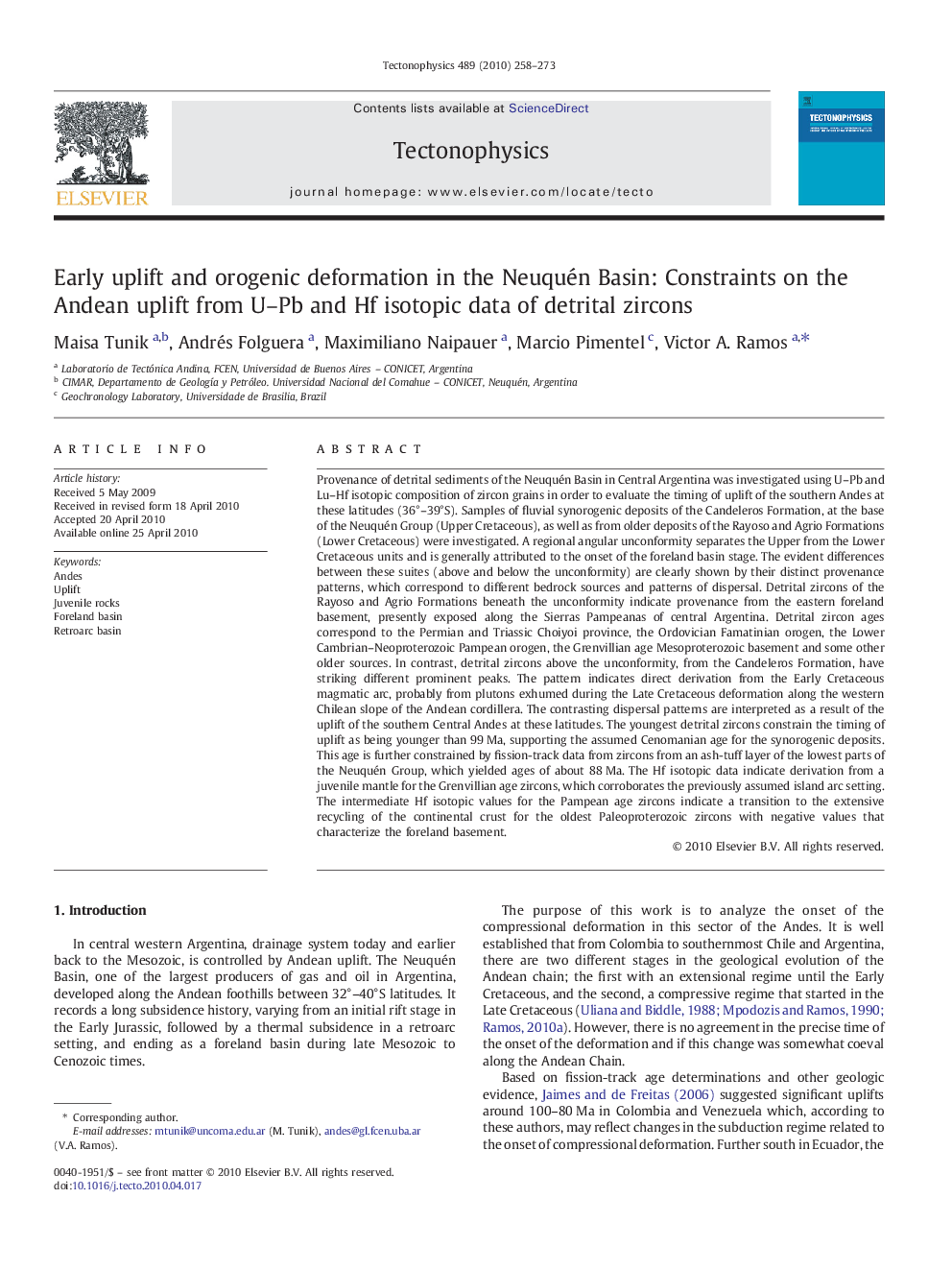| کد مقاله | کد نشریه | سال انتشار | مقاله انگلیسی | نسخه تمام متن |
|---|---|---|---|---|
| 4693543 | 1636866 | 2010 | 16 صفحه PDF | دانلود رایگان |

Provenance of detrital sediments of the Neuquén Basin in Central Argentina was investigated using U–Pb and Lu–Hf isotopic composition of zircon grains in order to evaluate the timing of uplift of the southern Andes at these latitudes (36°–39°S). Samples of fluvial synorogenic deposits of the Candeleros Formation, at the base of the Neuquén Group (Upper Cretaceous), as well as from older deposits of the Rayoso and Agrio Formations (Lower Cretaceous) were investigated. A regional angular unconformity separates the Upper from the Lower Cretaceous units and is generally attributed to the onset of the foreland basin stage. The evident differences between these suites (above and below the unconformity) are clearly shown by their distinct provenance patterns, which correspond to different bedrock sources and patterns of dispersal. Detrital zircons of the Rayoso and Agrio Formations beneath the unconformity indicate provenance from the eastern foreland basement, presently exposed along the Sierras Pampeanas of central Argentina. Detrital zircon ages correspond to the Permian and Triassic Choiyoi province, the Ordovician Famatinian orogen, the Lower Cambrian–Neoproterozoic Pampean orogen, the Grenvillian age Mesoproterozoic basement and some other older sources. In contrast, detrital zircons above the unconformity, from the Candeleros Formation, have striking different prominent peaks. The pattern indicates direct derivation from the Early Cretaceous magmatic arc, probably from plutons exhumed during the Late Cretaceous deformation along the western Chilean slope of the Andean cordillera. The contrasting dispersal patterns are interpreted as a result of the uplift of the southern Central Andes at these latitudes. The youngest detrital zircons constrain the timing of uplift as being younger than 99 Ma, supporting the assumed Cenomanian age for the synorogenic deposits. This age is further constrained by fission-track data from zircons from an ash-tuff layer of the lowest parts of the Neuquén Group, which yielded ages of about 88 Ma. The Hf isotopic data indicate derivation from a juvenile mantle for the Grenvillian age zircons, which corroborates the previously assumed island arc setting. The intermediate Hf isotopic values for the Pampean age zircons indicate a transition to the extensive recycling of the continental crust for the oldest Paleoproterozoic zircons with negative values that characterize the foreland basement.
Journal: Tectonophysics - Volume 489, Issues 1–4, 20 June 2010, Pages 258–273